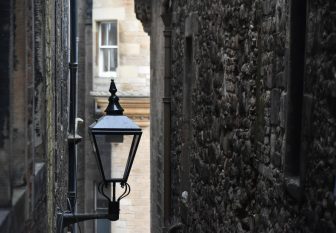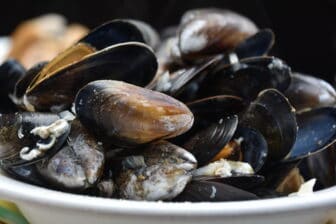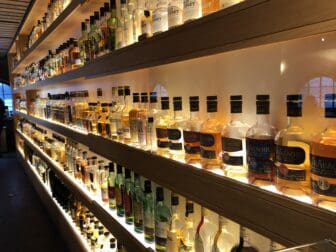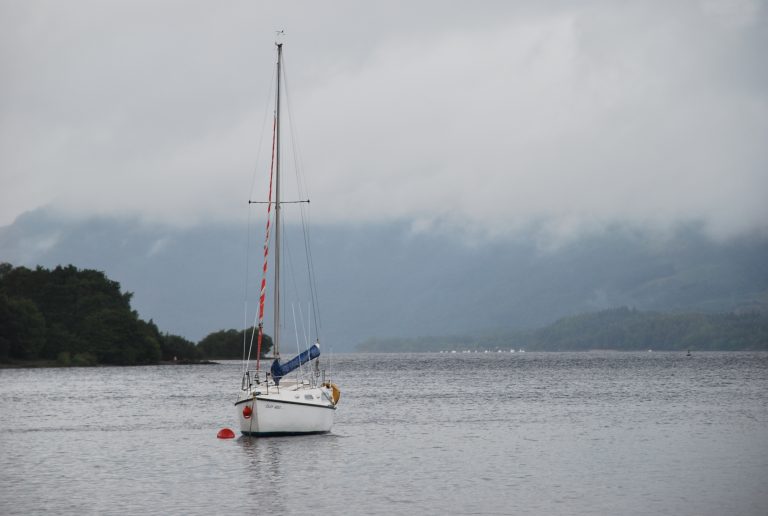

[Aug. 2010] From Edinburgh, Scotland, we took a 4-night, 5-day bus tour touring the Highlands and the islands.
Travelling around this area by public transport is a daunting task, so organised tours are convenient for those who do not drive like us.
It rained that morning.
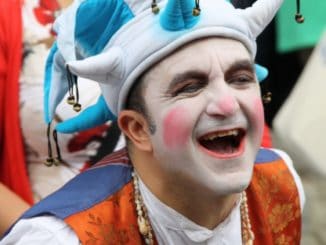
Scotland is a land with a lot of rain.
We headed for the meeting place, Royal Mile, with my shoulders down.
Edinburgh was just in the middle of the Edinburgh Festival, and the area was crowded with street performers and spectators from day to night, but this time of the early morning was quiet.
This tour was organised by a local company called Rabbie’s, and what they used was a minibus.
The total number of people on the tour was 16.
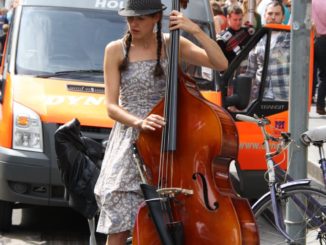
The driver served as a guide, too.
The tour participants were from Europe and North America, as well as from South America.
We have joined this company’s tours twice since then, and I have a good impression on all three.
Among them, this Highland Tour had a variety of participants, who were the best.
The guide, Michael was from Edinburgh.
Edinburgh is said to have the strongest accent in Scotland, and that’s true.
It takes a lot of attention to understand what he says.
When passing through the city of Edinburgh, he gave us some information about the city, for example, the vast headquarters of the Royal Bank of Scotland (RBS: a large bank that collapsed and was nationalized) was once a mental hospital.
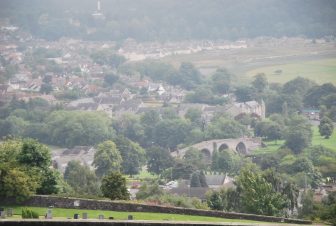
The origin of the international oil company BP was an entrepreneur who found paraffin oil in the suburbs of Edinburgh, and the site where the paraffin oil had been dug was used for the scene of Mars in the movie Total Recall.
These are trivia, but interesting.
Well, the first destination was Stirling Castle.
However, the tour did not go into the castle and we just listened to the explanation outside and looked around the scenery.
According to the guidebook, it has better location, architecture and historical significance than Edinburgh Castle and is the most imposing of all the Scottish castles, so we should visit it someday.
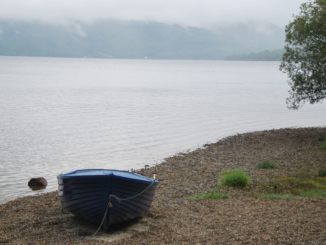
Certainly the view was good which meant the location was good.
After a short rest, we went on to Loch Lomond (Lake Lomond) next.
It is said to be the largest lake on Britain and is also the setting for the famous “Bonnie Banks o’ Loch Lomond” song.
The song has a fairly cheerful major melody, but according to Michael, it’s a farewell song to a younger brother whose life was saved to inform his hometown about the execution of his brother who was to be executed in England.
In the background of the lyrics, there is a legend that “a person who died elsewhere, his/her soul flies to the place where he/she wanted to go most.”
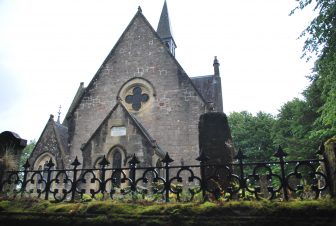
So, this brother is singing to his younger brother who is returning to Loch Lomond, “I can return to Loch Lomond first.”
Perhaps because of the weather, I felt that the lake had a sad mood matching the song.
When Michael emphasised that “History of Scotland is the history of the battles with England,” I wondered if England was still an “enemy” in the depths of the Scottish mind.

It seems that the minibus stopped on the west side of the lake, so we took a short walk in the village of Luss.
The well-taken care cottages are said to have been built by landowners around here in the 19th century for the people who work at the slate quarry.
It was raining, but the flowers were in full bloom, reminding me that this was the best season in Scotland.

